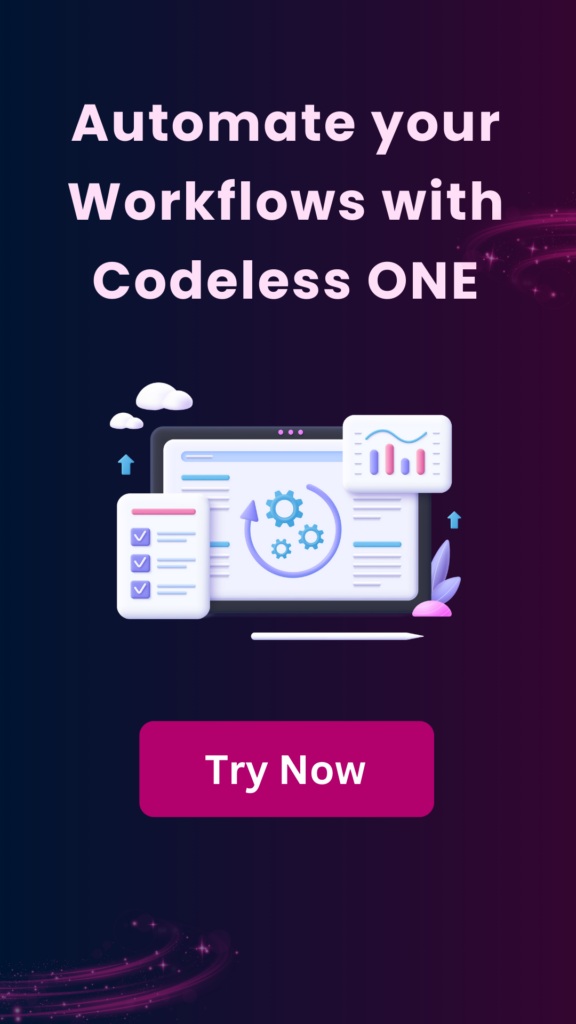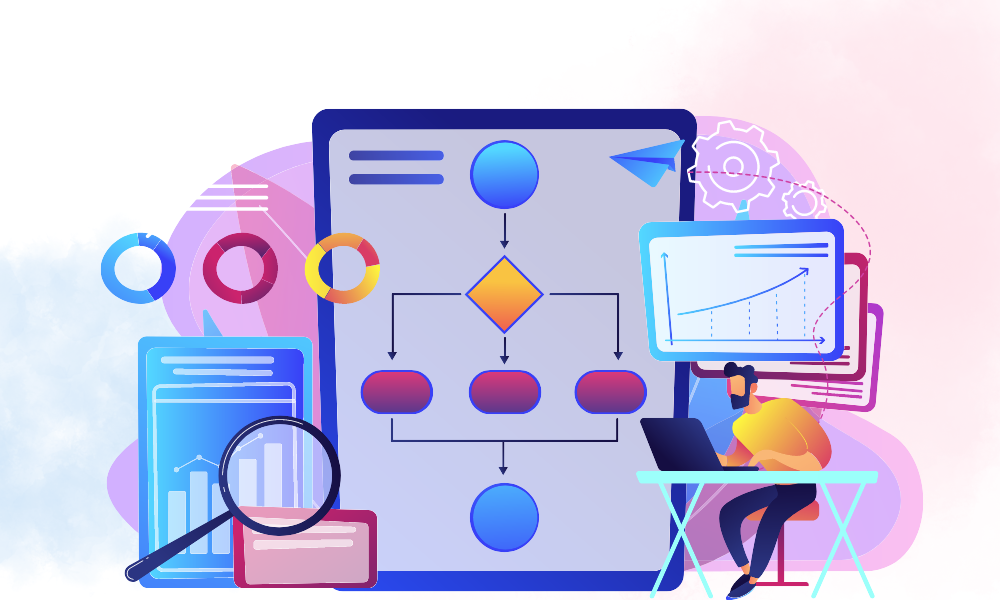Automated Approval Workflows
Benefits, Challenges, Elements and Implementation
Share:

Get to know about:
Aren’t you tired of the endless back-and-forth emails, the never-ending revisions, and the constant uncertainty of when your tasks will see the light of day? If so, you’re not alone. In today’s business environment, deadlines are non-negotiable, and the need for a smooth approval process has never been more pressing.
Whether you’re a seasoned professional or just dipping your toes into the professional world, we’re here to guide you through the ins and outs of approval workflows—and why they’re about to become your new best friend.
What is Approval Workflow?
Many professionals might already be familiar with approval workflows, especially those in fields like project management, content creation, or regulatory compliance. However, the level of familiarity and understanding can vary widely across industries, organizations, and individual experiences.
For some professionals, approval workflows may be a well-established part of their daily routine, while for others, they might be a relatively new concept.
In simple words, an approval workflow is a structured process used to review, revise, and approve content, documents, projects, or other materials before they are finalized or released. It involves a series of steps and checkpoints through which a piece of work progresses, with designated individuals or teams responsible for reviewing and providing feedback at each stage.
Examples of Approval Workflows
Approval workflows can be tailored to fit various processes and industries. For better understanding check out following common approval workflow examples:
1. Expense Approval Workflow:
- Employee submits an expense report.
- Manager receives a notification and reviews the report.
- Manager approves or rejects the expense.
- If approved, the finance department processes the reimbursement.
2. Document Approval Workflow:
- Author uploads a document for review.
- Reviewers receive notifications and provide feedback.
- Author revises the document based on feedback.
- Final approver gives the document a final review and approves it for publication
3. Purchase Order Approval Workflow:
- Employee submits a purchase requisition.
- Purchasing manager reviews the requisition and approves or rejects it.
- If approved, the purchase order is generated and sent to the vendor.
- Accounts payable department processes the payment upon receipt of goods or services.
4. Vacation Request Approval Workflow:
- Employee submits a request for time off.
- Manager receives the request and reviews team availability.
- Manager approves or rejects the request based on workload.
- HR department updates the employee’s records accordingly.
5. New Hire Approval Workflow:
- Hiring manager initiates a request to hire a new employee.
- HR department reviews the request and ensures budget availability.
- HR conducts interviews and selects a candidate.
- Final approval is obtained from department heads or executives.
Challenges Associated with Manual Approval Workflows
“According to a study conducted by Paycom, obtaining approvals from managers and supervisors emerged as the second most significant challenge for employees.”
Manual approval workflows present significant challenges for organizations.
Firstly, they are inherently prone to delays and inefficiencies. Approval requests often languish in email inboxes or get lost in paper-based systems, leading to prolonged decision-making processes and missed deadlines.
Additionally, the manual routing of requests requires significant administrative effort and is susceptible to errors, such as misplaced documents or overlooked approval steps.
This not only slows down operations but also increases the risk of compliance violations and inaccuracies in critical processes.
Secondly, manual workflows lack visibility and scalability. Without a centralized system to track the status of approval requests, it’s challenging for stakeholders to monitor progress, identify bottlenecks, or prioritize tasks effectively.
As organizations grow and the volume of approval requests increases, manual workflows become increasingly unwieldy and difficult to manage. This lack of scalability inhibits productivity and hampers the organization’s ability to adapt to changing business needs or accommodate growth.
Overall, these challenges underscore the urgent need for organizations to transition to automated approval workflows to improve efficiency, accuracy, and scalability.
7 Essential Features of an Approval Workflow
- Customizable Routing: Tailoring approval paths based on criteria like department, role, or request type ensures requests reach the right approvers swiftly.
- Automated Notifications: Instant alerts keep stakeholders informed about pending approvals, minimizing delays and facilitating timely action.
- Conditional Logic: Incorporating conditional logic enables dynamic routing and decision-making based on predefined rules, enhancing flexibility and efficiency.
- Escalation Procedures: Automatic escalation routes approval requests to alternative approvers if primary ones are unavailable, preventing delays and ensuring continuity.
- Mobile Accessibility: Mobile accessibility enables stakeholders to review and approve requests on the go, increasing flexibility and responsiveness to approval requests regardless of location.
- Reporting and Analytics: Reporting and analytics capabilities provide insights into approval process performance, including average cycle time, approval bottlenecks, and compliance metrics, enabling continuous process improvement.
- Security and Compliance: Robust security features, such as role-based access control and data encryption, ensure that sensitive information is protected throughout the approval process, maintaining compliance with regulatory requirements and organizational policies.
Benefits of automated approval workflows
Approval workflows offer numerous benefits for organizations, including:
- Efficiency: By automating the approval process, workflows reduce manual effort and streamline decision-making, resulting in faster turnaround times for requests and tasks.
- Transparency: Approval workflows provide visibility into the status of requests, enabling stakeholders to track progress, identify bottlenecks, and ensure accountability throughout the process.
- Consistency: Automated workflows enforce predefined rules and criteria consistently, reducing the likelihood of errors or inconsistencies that may arise with manual processes.
- Compliance: Approval workflows help organizations adhere to regulatory requirements and internal policies by ensuring that all necessary approvals are obtained and documented, minimizing the risk of non-compliance.
- Improved Communication: Automated notifications keep stakeholders informed about pending approvals, reducing the need for follow-up emails or phone calls and facilitating clear communication among team members.
- Enhanced Productivity: By freeing up employees from manual approval tasks, workflows enable them to focus on more strategic or value-added activities, driving overall productivity and innovation.
- Scalability: Approval workflows can scale to accommodate growing volumes of requests and tasks without requiring additional resources, making them suitable for organizations of all sizes.
- Cost Savings: By reducing manual effort and streamlining processes, approval workflows lower operational costs associated with time spent on administrative tasks, errors, and inefficiencies.
It also helps in building the healthy work culture. Overall, approval workflows optimize efficiency, promote transparency and compliance, and contribute to organizational productivity and success.
The need for efficient approval workflows has never been greater, and Codeless ONE has made it easier than ever to build and customize approval workflows without coding expertise. With Codeless ONE’s intuitive interface and no-code approach, anyone can create, deploy, and modify approval workflows to suit their specific requirements.
By leveraging Codeless ONE, you can streamline approval processes, reduce manual effort, and improve overall efficiency. Whether it’s automating expense approvals, document reviews, or purchase requests, Codeless ONE empowers users to design workflows that fit seamlessly into their existing operations.
Streamline your approval process with less efforts.
Tailored workflows for all your unique business processes.











